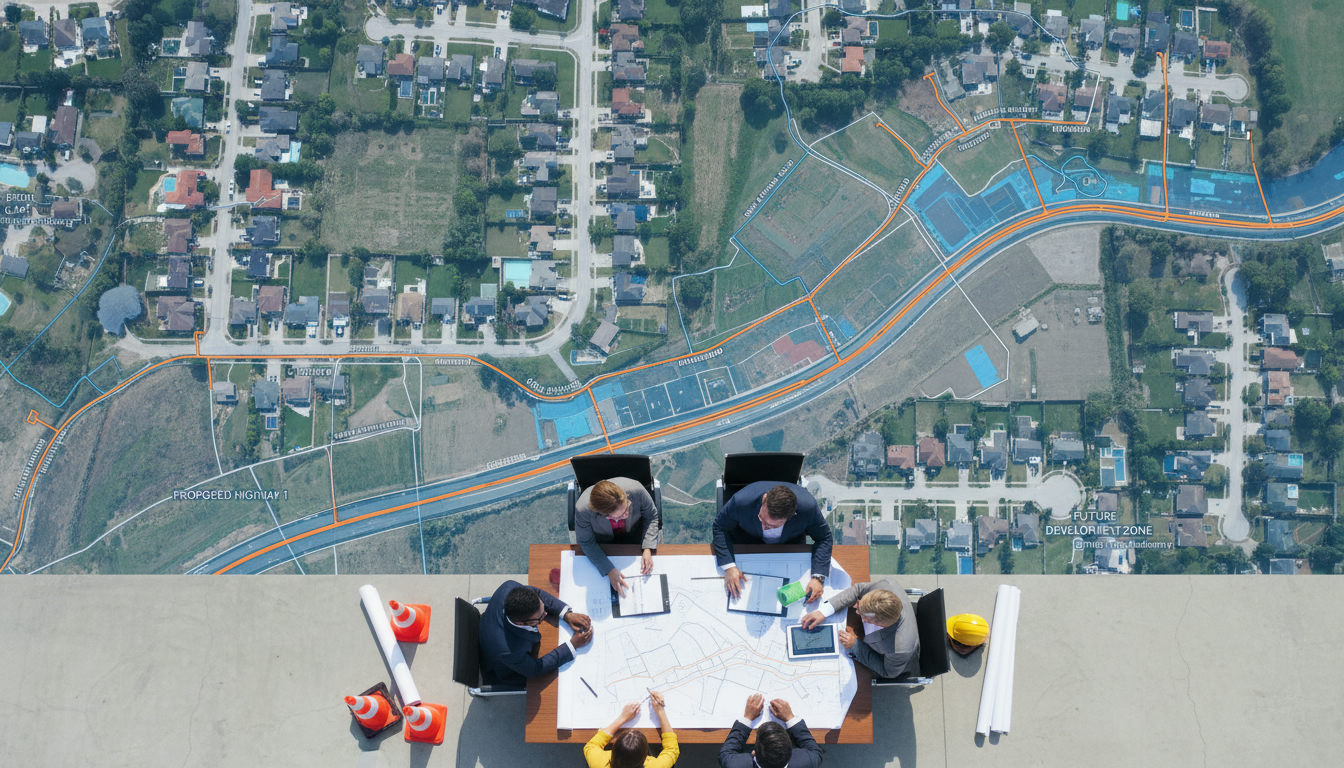Are there plans for new roads or highways
nearby?
Is a major new highway or road being built near your home — and will it change your property value? Read the clear answer.
Quick answer
Yes — there are often plans for new roads, highway upgrades, or interchange work within city and regional planning cycles. Most projects follow a public planning process (Official Plan updates, Transportation Master Plans, Environmental Assessments). The real question is: which projects are active for your neighborhood, what stage they’re in, and how they will affect traffic, noise, and property values.
How local government plans shape roads
Municipalities, regional transportation authorities, and provincial agencies publish the road projects that matter. Look for:
- Official Plans and Transportation Master Plans (identify long-term road corridors)
- Environmental Assessment (EA) studies (detailed impacts and timelines)
- Council meeting agendas and minutes (project approvals, funding decisions)
- Capital budgets and tender notices (construction windows)
- Regional and provincial agencies (Metrolinx, Ministry of Transportation in Ontario; equivalent agencies elsewhere)
These documents tell you whether a concept is a decade away, under active design, or in construction. Use the project name in search queries + “Environmental Assessment” or “Transportation Master Plan” for precise results.
Recent infrastructure trends and what they mean
Across urban regions you’ll see three common moves:
- Road widening and intersection upgrades to reduce congestion.
- New arterial links to support growing suburbs.
- Highway interchange upgrades tied to commercial growth.
Each has predictable impacts. Widening can reduce commute times but increases traffic volume long-term. New links unlock land for development, often lifting nearby property values but changing neighborhood character.

Neighborhood impact: traffic, noise, and home values
- Traffic: Short-term construction increases congestion; long-term patterns depend on induced demand and alternate routes.
- Noise and air quality: Closer proximity to high-capacity roads raises exposure; mitigation appears in EA reports (sound walls, buffering).
- Property values: Proximity to new transit or well-designed roads usually increases demand. Immediate adjacency to highways can depress values unless effective mitigation and access improvements are included.
Data-driven point: Use EA traffic models and municipal impact assessments — they quantify expected traffic counts and noise levels, which predict realistic market outcomes.
What a homeowner or buyer should do now
- Search the municipal planning portal for your address — pull up Official Plans and recent council minutes.
- Read the EA executive summary for any nearby project — focus on timelines, mitigation, and traffic counts.
- Check capital budget and tender portals for construction schedules.
- Ask targeted questions to your realtor: expected noise, access changes, and market comparables nearby.
- Plan a site visit during peak hours and compare pre/post traffic projections.
Conclusion — make decisions with facts, not fear
Road projects are public and trackable. If you want a fast, sourced read on what’s specifically planned for your block, I can pull the official reports, show the timelines, and explain the real impact on value and livability.
Contact: Tony Sousa — Local Realtor. Email: tony@sousasells.ca | Phone: 416-477-2620 | https://www.sousasells.ca





















